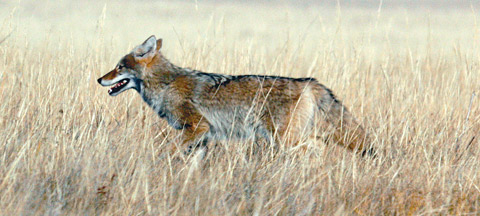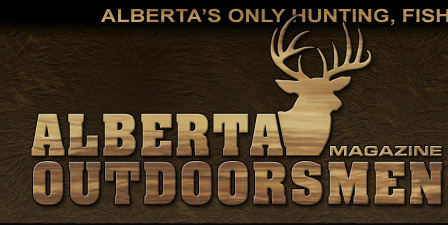|
 |
Shoulder Mite Update:
Back in February of this year, I wrote in this space an article titled “Shoulder Mites?” It was in reference to a large male coyote I had trapped in January that was missing a patch of guard hairs between its shoulders, rendering the pelt useless. I then contacted Alberta’s Provincial Wildlife Disease Specialist, Dr. Margo Pybus, and asked her if she knew what was inflicting this coyote and others being caught by trappers around the province. At the time, she informed me that she was receiving reports of this strange affliction from other trappers as well and that some were seeing it in wolves they had trapped too, especially in the Peace Country.
 |
| “Just what is causing the guard hairs to fall out of coyotes and wolves?” |
Margo didn’t want to speculate as to what could be happening to these canids, but as a best guess she offered that it could be dog louse, which is common in wolves in Alaska. But she stressed that she couldn’t be sure without examining the animal.
Afterwards, the call went out to trappers around the province to provide Margo with samples if perhaps they trapped one of these affected critters.
Recently, Margo provided the following:
“We have put a fair bit of work into this issue. I now know that the shoulder patch on wolves, and now appearing on coyotes, is not particularly new. The fur buyers have long had a term for it. In previous years, it was considered a ‘rub patch’ but the damage is not consistent with rubbing.
“Once dog lice became established on wild canids in the 1990s, the thought among trappers and buyers changed to possibly shoulder damage in association with dog lice. However, damage associated with lice looks different, smells different, and occurs in places other than the shoulders. And the three critters we looked at in the lab in the last few months had no lice. And it is definitely not mange mites or any other type of mite. The skin in the affected area seems to be thinner than normal and microscopic examination of affected areas indicates the hair follicles that produce guard hairs have shut down. These follicles do not appear to be dead, they are simply inactive and not producing a replacement for the lost guard hair. The hairs in affected follicles shrivel, turn black, and easily fall out of the follicle.
“In talking to national fur buyers, they tell me that the shoulder patch, in which the guard hairs fall out but has no damage to the underpelt, has been around for many years. However, the patches seem to be more common now than before, and perhaps more likely to occur on coyotes than wolves and never seen on foxes. The occurrence is quite widespread across the country. In Alberta, this winter we had reports from Peace Country to central Alberta and the southwest. In fact, on my trail cameras at home, I have a coyote pup that started with a triangular shoulder patch in mid-winter this year and now has no guard hairs on the shoulders, neck, and front legs. The other coyotes on the cameras look absolutely normal.
“So, we have learned a lot about the condition but very little about the cause. We will happily look at more samples if they are available to see if there is more we can glean from affected hides or carcasses.”
CWD Update:
A study released in May of this year by Professor Claudio Soto of the Department of Neurology, University of Texas and others titled “Grass Plants Bind, Retain, Uptake, and Transport Infectious Prions”, has shown what many have been worried about for years—that “prion contaminated plants transmit prion disease to animals upon ingestion.”
According to the report, “... the perception of the risk for animal-to-human prion transmission has been mostly limited to consumption or exposure to contaminated meat; our results indicate that plants might also be an important vector of transmission that needs to be considered in risk assessment.”
Just what does this mean?
“Since plants are such an important component of the environment and also a major source of food for many animal species, including humans, our results may have far-reaching implications for animal and human health.”
You can read the report in its entirety at http://www.cell.com/cell-reports/pdf/S2211-1247%2815%2900437-4.pdf. ■
For previous Outdoor Pursuits click here.
|
|
|
|


